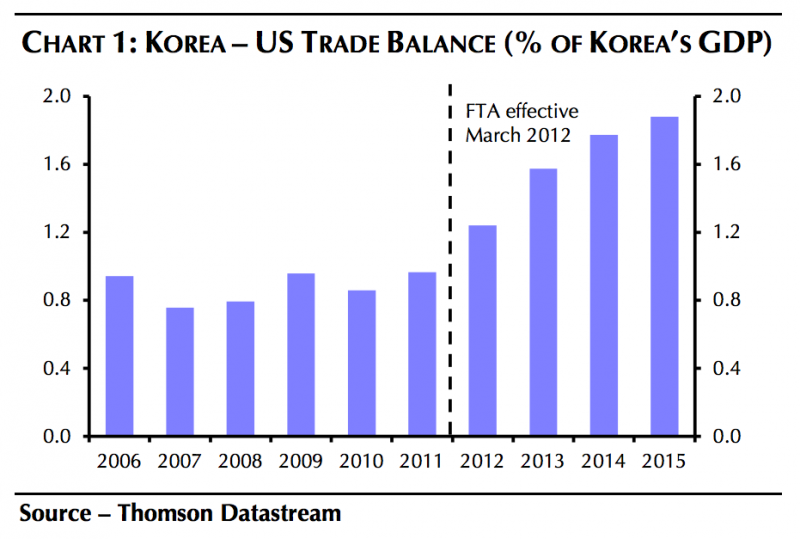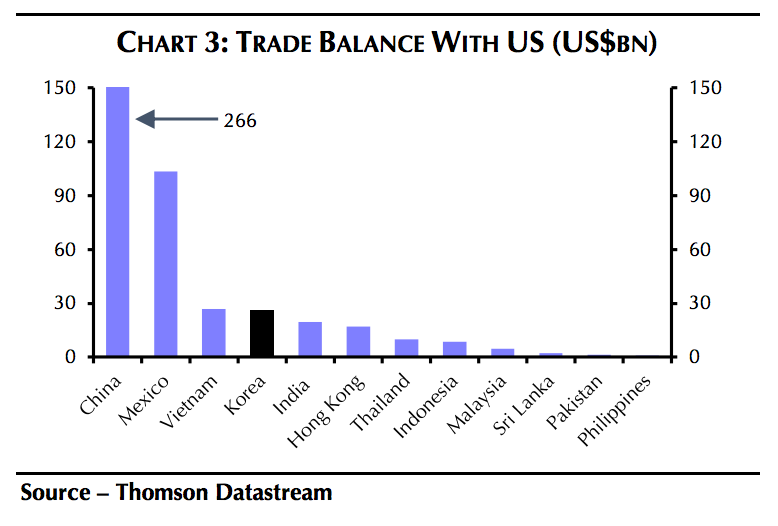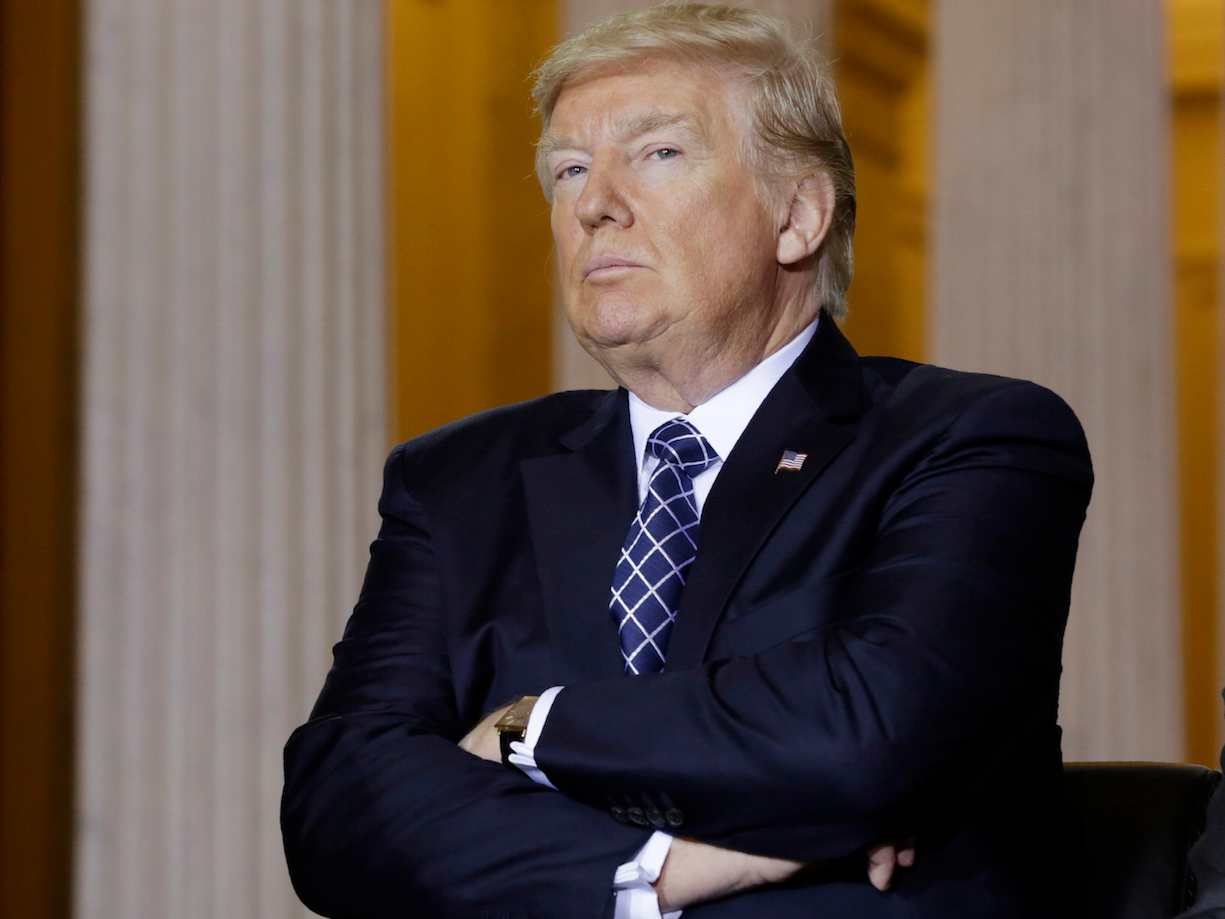US President Donald Trump is going after his latest trade target: South Korea.
In an interview with Reuters, the president said he would renegotiate or terminate the US’ free trade deal with South Korea after his administration finishes the NAFTA renegotiation with Canada and Mexico.
He said the trade deal, which is referred to as KORUS, was “unacceptable” and “horrible,” according to Reuters.
“While likely to strain diplomatic relationships, Trump seems willing to use his significant negotiating leverage to extract a more favorable deal from Korea, which may put further downside pressure on the Korean won from here,” Honglin Jian, a research analyst at Credit Suisse, said in a note.
The Korean won closed down by 0.7% at 1,19.843 per dollar on Friday. It has fallen against the US dollar, the euro, and the Japanese yen and has been the worst performing Asian currency since the start of April.
So, what is KORUS?
The United States-Korea Free Trade Agreement, aka KORUS, is a trade deal between the US and South Korea. It was originally negotiated under the George W. Bush administration back in 2007, but that version was renegotiated under the Obama administration three years later.
The trade agreement rolled back tariffs on 95% of goods between the countries within five years and pumped up intellectual property rights. It was the largest US trade deal since NAFTA.
It went into effect March 2012.
What has happened since KORUS' implementation?
South Korea is currently the US' sixth largest goods trade partner.
The US International Trade Commission predicted that the agreement would increase American goods exports to South Korea by about $10 billion, but they actually fell by $3 billion from 2011 to 2016, according to The Economist.
However, the Economist also notes that the deal came into effect as global trade slowed sharply. American exports would've been even lower without the agreement.

Looking at the numbers, the US trade deficit in goods with Korea had double since KORUS came into affect. It rose to $27.6 billion in 2016 from $13.2 billion in 2011, according to the president's US Trade Policy Agenda report for 2017.
However, the US has a trade surplus in services with Korea. It was about $10.7 billion in 2016, up by 2.6% from 2015 to 2016, according to the Office of the United States Trade Representative.
Korean investment into the US rose from 2012 to 2015. Korean companies invested $23 billion in the US, more than in the previous 30 years, according to figures cited by economists at Capital Economics. Moreover, the US now accounts for 10.6% of Korean imports, up from 8.5% in 2011.
Is the US trade deficit in goods with Korea huge in absolute terms?
No. As noted above, the US runs a trade deficit in goods with Korea. However, compared to other countries such as China, Mexico, and Vietnam, it is relatively small.
Here's what that the US-Korea trade balance looks like relative to others on a chart. (For what it's worth, China's is so large it actually goes off the chart.)

"If the Trump administration is serious about bringing down the overall US trade deficit, it will at some point need to focus its attention on Mexico and China, which combined account for the vast majority of overall US trade deficit," Krystal Tan and Gareth Leather, economists at Capital Economics, said in a note.
"Note that when services are included, Korea's bilateral surplus with the US is much smaller," they added.
What might happen if KORUS is renegotiated?
If KORUS is retooled, it could create problems for Korean exporters, according to Tan and Leather.
Specifically, if Korea's share of US imports were to drop back to the 2.7% average from the decade prior to KORUS' implementation from the current 3.2%, then that could hit 0.4% of Korea's GDP, according to their estimates.

